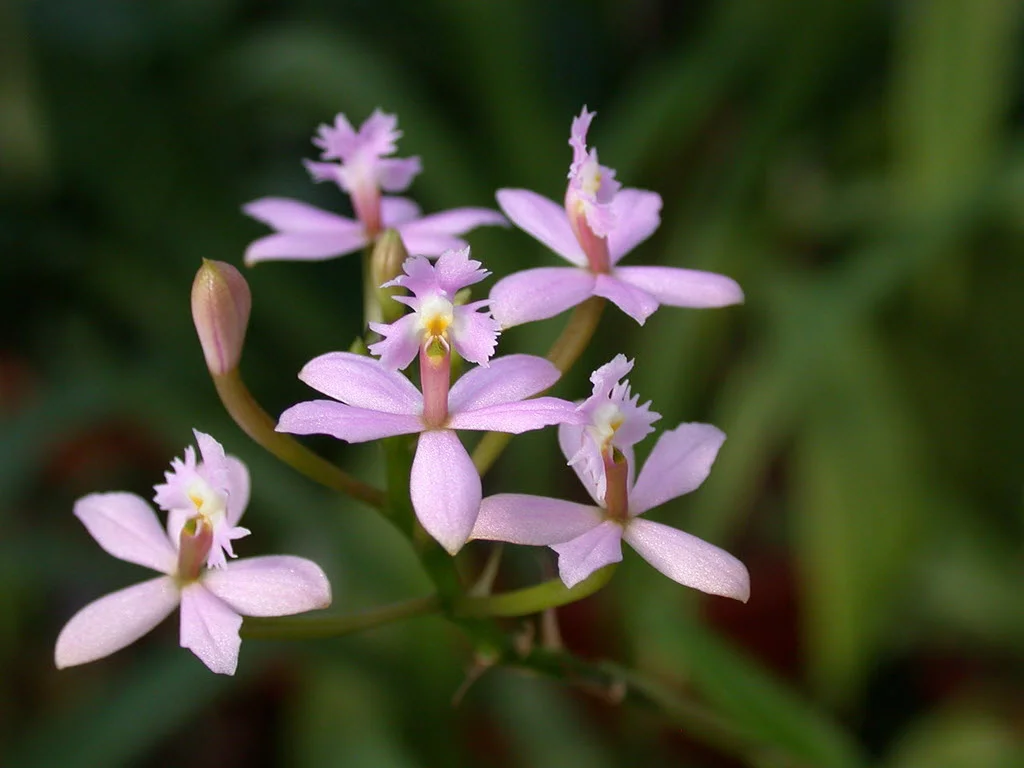Table of Contents
Pronunciation: lay-LEE-uh
Introduction
Laelia orchids are the workhorses of the orchid world. They're striking on their own, but they're also very easy to cross with several other species to create gorgeous hybrids that are hardy and sturdy. This is a trait that makes them memorable in the orchid world.
Laelia Purpurata
Native to Brazil and Mexico, these plants produce laterally compressed pseudobulbs. They have three or four broad leathery leaves that create a striking contrast to the large, showy flowers. The flowers typically come in bright pink, orange, pink and white, lavender, and white and yellow.
Temperature
This is a cooler growing orchid who can't tolerate hot temperatures well without damage. In their active season, they like daytime temperatures that range between 70°F to 75°F (21°C to 24°C). The nighttime temperatures can dip slightly, and they prefer a temperature range between 55°F to 60°F (13°C to 16°C).
Once Autumn comes around, these orchids enter a slower-growing period. They do very well with lower temperatures during this time, and the daytime temperatures should stay around 55°F (13°C). The nighttime temperatures during this period should stay between 45°F and 50°F (7°C to 10°C). This is also when most of them bloom.
Light
Laelia orchids do very well with very bright sunlight. Setting them in a sunny south-facing or east-facing window will work well. However, they can't tolerate direct sunlight without burning. If your plant is going to be in an area with direct light, provide netting to break it up.
You can tell quite easily if your orchid is getting enough light by looking at the leaves. If they're dark green, they need more light. You're looking for a light green color with a slight yellow tint.
Water and Humidity
These orchids like to dry out between the times that they are watered and this means you can water them every other day unless your humidity is higher. If it is, you may want to water them once a day or mist them between watering if you water them every other day to ensure they don't completely dry out.
Around the end of September, your plant will start to go into its slow growth period and begin to bloom. During this time, they like to be drier, so you can water them every other day without worry. They prefer to dry rather quickly after watering, and they don't like to sit in water. The humidity level should range between 50% to 70% with lower humidity during the slow growth months.
Feeding
Laelia orchids don't need a lot of fertilizer to do well. In the spring and summer months, you can feed them standard orchid fertilizer that you've diluted to one-half to one-quarter strength every other week. Once they enter the slower growth period in the fall and winter months, you can suspend feeding them until you see new growth again in the spring. When you see new growth, resume feeding your orchid every other week.
Potting
Your Laelias can adapt very well to cultivation in pots, but they also do well on slabs. If you pot your orchid in a pot, make sure your potting medium is a fast-draining mix specially designed for orchids. It'll usually contain a mix of charcoal, pine bark, and expanded clay pellets. Coarse fir bark is another option that works very well.
You want to repot your plant once a year to refresh the growing medium. It is a good idea to repot them in the spring when you start seeing new growth. This will give them the growing season to re-establish themselves. Don't pack your growing medium around the roots because they like to have lots of air movement.
Video
Brad from Brads Greenhouse shows off his stunningly beautiful Laelia Anceps. He also shares how he takes care of these cattleyas.
Find out what orchids suit your climate best. Browse through our comprehensive list of the different types of orchids.











